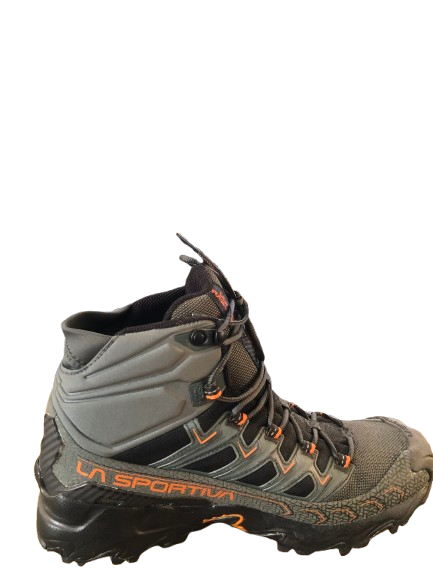Trekking Grade
Trekking Category
Manalu Tea house Trekking is a moderate to challenging trek that goes around the World’s eighth-highest peak, Manaslu (8,163 m), and it is officially granted permits to trekkers in the Manaslu region in 1991. Trekking to this remote and isolated Manaslu region, you will get an opportunity to explore the indigenous cultures and traditional lifestyles of the highlanders.
Mansalu trekking Expedition begins from Kathmandu to the trailhead – Soti Khola via. Arughat bazaar by land transport. We stay overnight at SotiKhola. The next morning, Trekking to Manaslu starts from lush subtropical terrain, climbing along the banks of the Budhi Gandaki River and reaching the highest point of the Larkya La pass at 5,235 m. We slowly walk through the middle hills and finally reach the high, arid desert region which is actually considered a part of the Tibetan Plateau where people of Tibetan origin inhabit and follow Tibetan Buddhism. En route, you will traverse through small villages, get closer to Tibetan territory and encounter some Mani stone walls at the gateway of each village and occasionally a Stupa. This trek is truly strenuous at the time of crossing over the Manaslu-Lark ya La Pass. Every trekker requires excellent physical stamina and passion to complete Manaslu Circuit Trek.
The temperature at the beginning of the trek is warm and humid. As you hike progressively to higher altitudes, the temperature drops, and begin hiking in trees and then alpine grasses, and then snow and rock by the time you reach the Pass. You will find yourself absolutely in the beautiful scenery, surrounded by mountains.
Due to the remote and undeveloped region, Manaslu region is believed to be in total contrast to trekking in the Annapurna region, rating ‘Round Manaslu Trek’ the first option for those who prefer to immerse in nature and love adventure.
The best trekking seasons are between spring (March to May) & autumn (September to November). June to August is the monsoon season when the heavy rainfall causes the region to remain drowned most of the time.
Nepal Fair Step Trekking(p) Ltd, as a Kathmandu base guiding company, our representative will be waiting for your arrival with the company board. The service starts welcoming you with garland and transfers you to a previously booked hotel, and you will get more information about the next schedule.
The day would be cultural, historical, religious, architectural, daily life, and many more explorations. An experienced linguistic city guide will escort you to explore three world heritage sites Pashupatinath, Patan Darbar squre, and Swaymbunath. Our representative will bring you to the welcome dinner, and brief you on the trek overview, services, and other logistics. You will enjoy local food with a local family or, at a traditional Nepalese restaurant.
The first day of the Manaslu trekking tour is driving to Sotikhola via Aarughat. Following Prithvi highway till Dhading and the road separates Aarught Bazaar. Kathmandu to Arughat bazzar takes about 6–7 hours. From Arughat to Sotikhola takes another 1 1/2 to 2 hours. Travel makes a more enjoyable viewing of Annapurna, Manaslu, Ganesh Himal and Lantang Himal.
To be able to submit a cost estimate, we need to know the number of persons in your group, the required hotel category, the favored mode of transportation (by flight, by local or private transport) and any alternations to your itinerary.
Airport pickup and drop (domestic and international)
Local transportation; (Domestic flight, road transport according program)
Hotels: (4/2) star standard hotel including breakfast (according to program in Kathmandu& other places)
Welcome and farewell dinner
Sightseeing in Kathmandu (Patan Durbar square, Swyambunath, Pashupatinath)
Sighseeing Bhaktapur and Boudhanath
Camping/ Lodge Trek’s cost according to program
Full board during the trek (Breakfast, Lunch and Dinner)
Government-licensed guide (English speaking or other foreign language if requested)
Required numbers of porters (1 porter for 2 guests; 12 kg per guest in Tea house trek)
Sightseeing entry fees/national park /conservation/restricted area permit fees (monasteries, temples, Stupa entrance fees but not donation.)
TIMS (Trekker’s information Management System) permits or peak climbing permit fees (according to your program)
Group First Aid Kits (We recommend bringing your personal first aid kit as well.)
Trekking bag for each guest.
Staff insurance
Trekking bag for each guest
Nepal Fair Step Trekking printed T-Shirt
International airfare from and to your country
Nepal Visa fee (bring accurate USD 50 cash for 30 days visa and need to fill online form)
Excess baggage charges
Personal gears
Personal expenses e.g. phone calls, laundry, bar bills & extra porters
Travel & Health Insurance – Emergency Helicopter Rescue Insurance (Most recommended)
Any meals (lunch &dinner) in Kathmandu – $ 10 to 15 for per meal in tourist restaurant (except welcome and farewell dinner)
Any kinds of drinks (alcohol &non-alcoholic beverage) neither during the trek nor in Kathmandu
Tips for staff (not mandatory but expected)
Hot shower, recharging of batteries (available during the
The cost which is not mentioned above.
Very amazing tour and very nice guide as well good service overall the trip was so good!!
Very amazing tour and very nice guide as well good service overall the trip was so good!!





